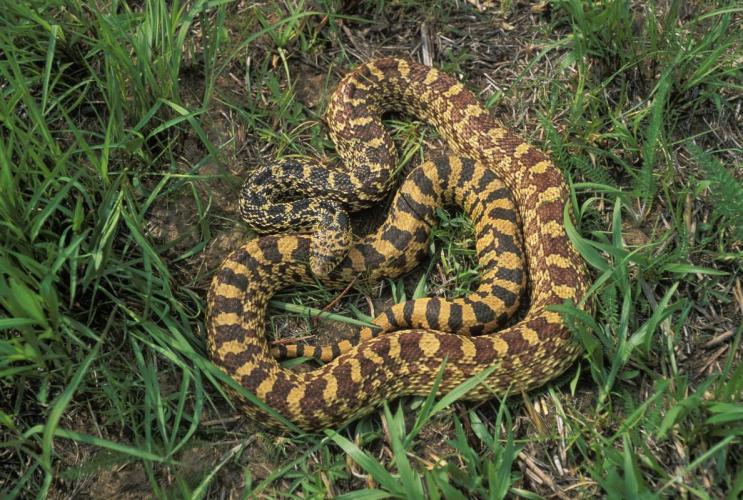Grand River Grasslands is one of the last areas with deep soil / glacial till prairies in Missouri. It is located within the Central Tallgrass Prairie ecoregion, which extends across six states — Illinois, Indiana, Iowa, Nebraska, Missouri, and Kansas. This region was mostly tallgrass prairie when settlers arrived. Today, only about 3 percent of those tallgrass prairies remain, and in Missouri, less than 1 percent of our original prairie remains. In 1999, conservation partners in Missouri and Iowa began plans for a grassland landscape large enough to support key species that depend on grasslands for survival
The Grand River Grasslands currently includes more than 86,000 acres in Missouri, with another 74,000 acres extending north into Iowa. Ninety-six percent of the area is privately owned. Core conservation grasslands exist in each state. In the heart of Missouri’s portion is MDC’s Pawnee Prairie Conservation Area (500 acres) and The Nature Conservancy’s Dunn Ranch (4,000 acres).
The full vision for the Grand River Grasslands is to make it a premiere destination where people can visit and appreciate healthy prairies and working grasslands. To make this happen, we are engaging the help of stakeholders at all levels.
Contact our Northwest Regional Office to speak with a member of our dedicated team.
MDC staff can provide:
- Cost-share information
- Technical assistance for improving grassland and stream health
- Guidance for timber stand improvement
- Opportunities to best experience and learn about the Grand River Grasslands
Title
What Conservation Practices Could Benefit Me?
MDC’s aim in priority geographies is to find common sense solutions to meet the goals of local landowners while balancing the needs of nature. Our staff and partners will work with you to create a program that fits your property goals with conservation practices that are right for you. In the Grand River Grasslands, these practices may include:
- Streambank stabilization to reduce erosion
- Reinforced, stable stream crossings
- Native warm-season grass and wildflower seeding
- Invasive species control and removal of aggressive woody shrubs
- Timber stand improvement
- Improved and reliable livestock watering systems
- Fencing to protect sensitive areas from livestock
Title
How Will The Area Benefit From Conservation Efforts?
- Higher productivity on working grasslands
- Reduced soil erosion
- Increased groundwater recharge, better water quality, and healthier streams
- Restored remnant prairie, woodland, and savanna habitats
- A more continuous, less fragmented grassland landscape
- Stable populations of this area's plant and animal species
- More open vistas and more native wildflowers
- Increased public awareness of how rare and special prairies and grasslands are
Title
What Species Will Be Helped?
While all species will benefit — including game animals — key species and species of greatest concern in the Grand River Grasslands include:
- Birds: greater prairie-chicken*, Henslow’s sparrow, dickcissel, Bell’s vireo, eastern meadowlark, field sparrow, bobolink, grasshopper sparrow, loggerhead shrikeC, northern harrier*, northern bobwhite, short-eared owlC, upland sandpiper, red-headed woodpecker, eastern wild turkey, brown thrasher
- Amphibians: eastern tiger salamander, western chorus frog, plains leopard frog, boreal chorus frog
- Reptiles: northern prairie skink, five-lined skink, western slender glass lizard, ornate box turtle, bullsnake, lined snake, prairie ring-necked snake, smooth earthsnake, eastern yellow-bellied racer
- Mammals: Franklin’s ground squirrel, plains pocket gopher, Indiana bat* **, meadow vole, least weasel, American badgerC, western harvest mouse, deer mouse
- Insects: monarch butterfly, regal fritillary, prairie mound ants, native bees
- Fish: Topeka shiner* **, central stoneroller, orangespotted sunfish, red shiner
- Plants: native warm-season grasses, tall larkspur, prairie violet, compass plant, pale purple coneflower, blazing stars, butterfly milkweed, asters, goldenrods, downy gentian, sedges, legumes, oaks, hickories
C = species of conservation concern, * = state endangered, ** = federally endangered






































